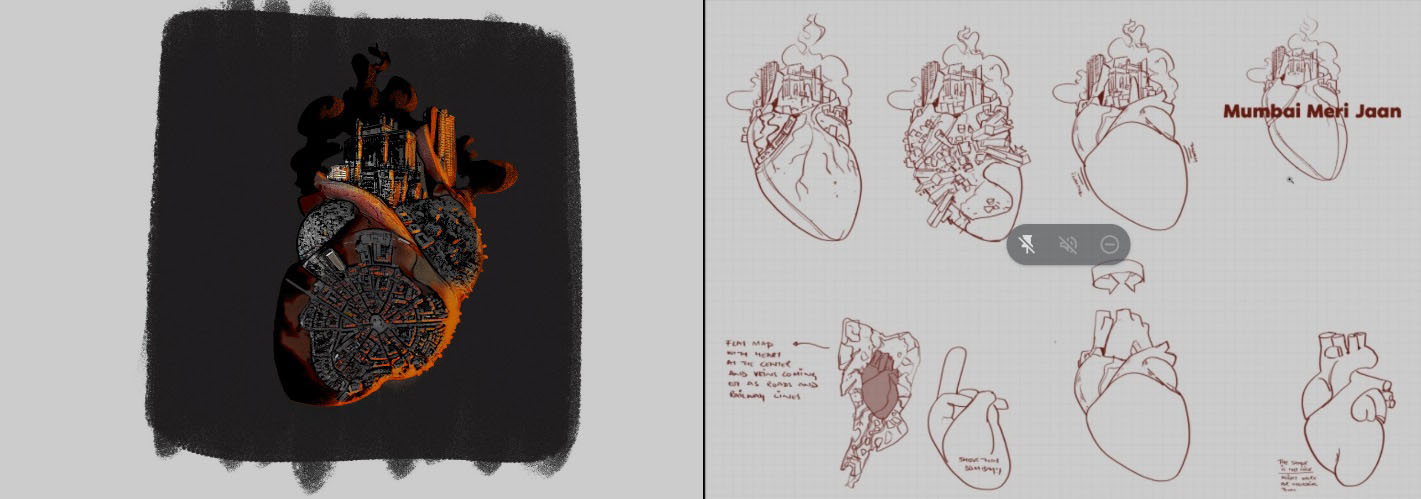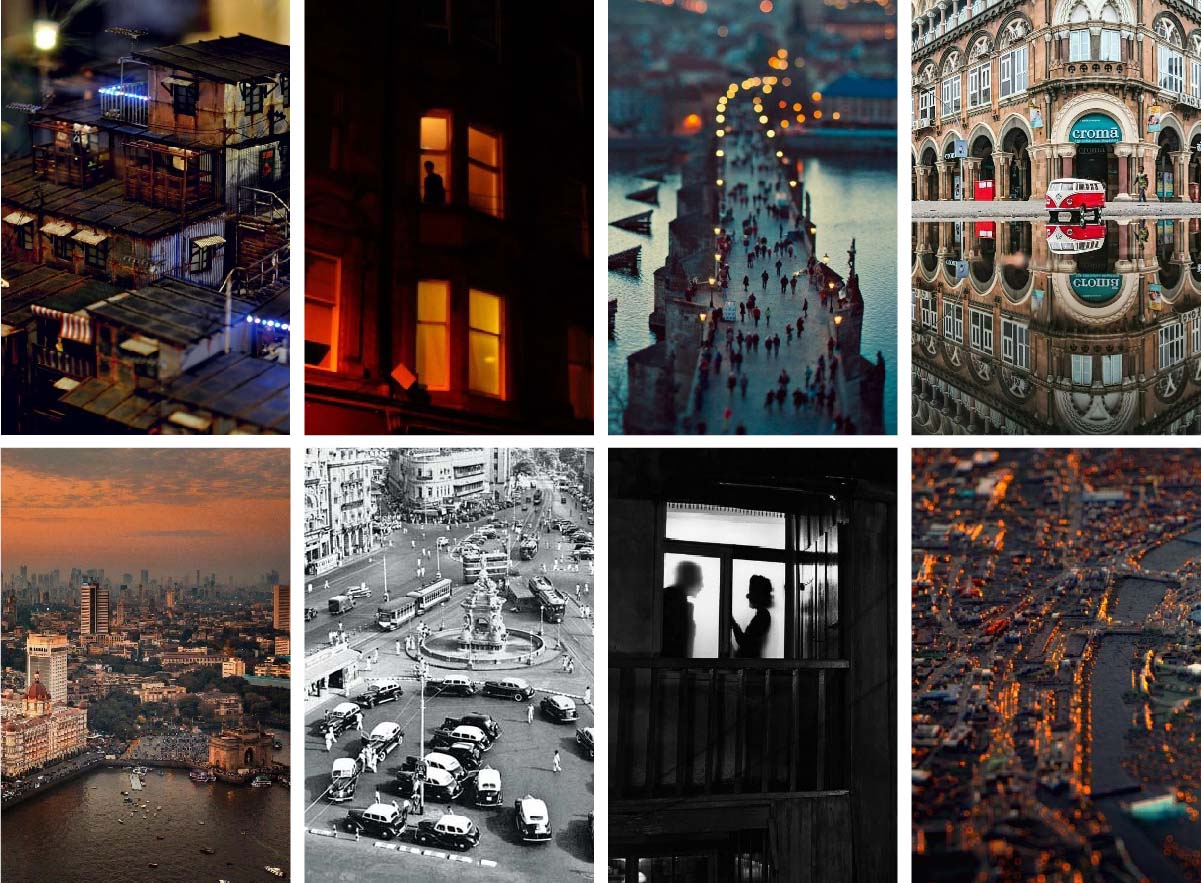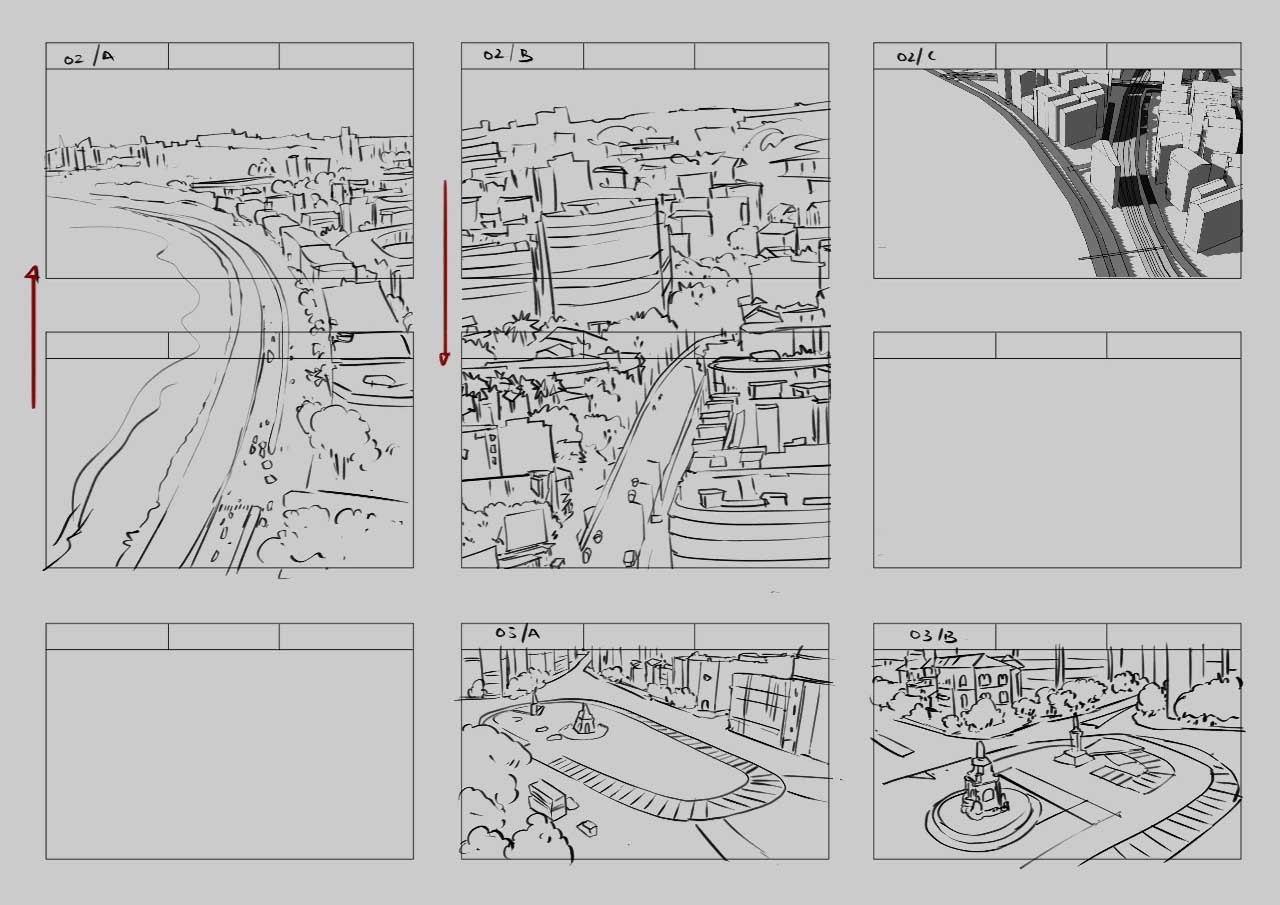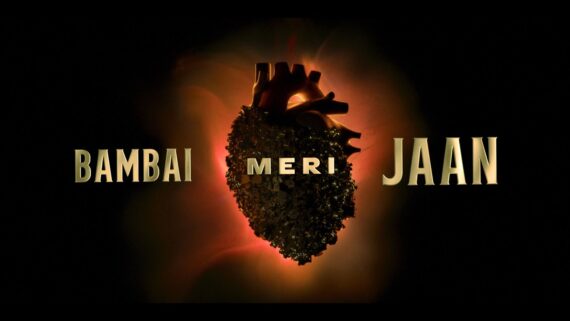Yeh Hai Bambai Meri Jaan: In conversation with Plexus Motion

“To romanticize a city, you always show her at night.” says Plexus Motion talking about their award-winning title sequence for ‘Bambai Meri Jaan’. The Mumbai-based director duo have been credited with some of the best Motion Title Sequences for shows and movies like Farzi, Ponniyin Selvan, Gangs of Wasseypur and many more.
In this feature, we deep dive into the newest jewel in their crown- the title sequence for Bambai Meri Jaan that has won the 'Video of the Year 2023’ at the Motion Design Awards.
Bambai Meri Jaan | Opening Title Sequence | Avinash Tiwary, Kay Kay Menon | Amazon Original Series
Connecting with the director of ‘Bambai Meri Jaan’- Shujaat Saudagar through Chalkboard Entertainment producer Vikesh Bhutani, Plexus landed the project with their long-time collaborator Excel Movies.
“Once we saw the offline cuts of the show, it resonated with us, especially since we grew up in Bombay. The rest, as they say, is history!“
Excited to dive into something fully CG they explored a few initial ideas. They say,” We spent a couple of months brainstorming, but it felt like we hadn’t quite hit the mark.”

Early exploration of the title sequence for ‘Bambai Meri Jaan”
Then, during a fresh brainstorming call, the idea of showing the city as a beating heart came up. They say,”When Shujaat heard it, he loved it, and we knew we had something special.”

Forming a team including Art Director Yuvraj Jha aka Monkeyverse, CG lead Annas Zakir, and cinematographer Meghana Chevalam, they set out to visualize the city of dreams.
With just 45 days to develop the sequence, Yuvraj and Meghana dove into the goldmine of resources from archival footage, detailed design decks and even incredible aerial shots by the VFX teams at Excel VFX and Identical Brains.
However, none of the scenes quite matched their vision for the title sequence. So the team had to rearrange, re-animate, re-texture, and re-light everything.
The city of Bombay presented as a miniature set is one of the first things that intrigues the viewer. Talking about this stylistic choice they say,” The miniature look fit the ‘Mumbai underbelly’ theme perfectly, giving the events a God’s eye perspective - or well, like a kid with a magnifying glass watching things unfold on an anthill. And from that perspective, it really captures how trivial human actions can be, even if they are by powerful people or motivated by emotion.”
“This style helped us highlight the impact of violence on the city, allowing us to witness it grow bigger and bigger until the whole city is engulfed. We love miniature and tilt-shift cinematography, so doing it in CGI was exciting for us.“

References used by Meghana and Yuvraj
After getting the concept approved, the team started conceptualizing the story that weaves the heart-shaped city. Working closely with Yuvraj and Meghana to get the right blend of anatomy and aesthetics, the team crafted the narrative of a small fight escalating until it consumed the entire city. They say,” It took some time, but when we saw the final look, we were thrilled. After that, we moved on to storyboards and animatics.”







Early Storyboard for Bambai Meri Jaan
Finalised Animatic for Bambai Meri Jaan
Once the animatic was approved, the team started building the CG scenes. Accurate arrangements of the city was a bit difficult and Yuvraj had to use a Google maps plug-in within Blender to generate some layouts that were used as the base for constructing the South Bombay scenes.



For the heart-shaped city, they purchased an anatomically correct version of the human heart and Annas scattered a low poly particle system of Mumbai apartments all over the heart. This became tough when we they required lights switched on in the buildings because of the 100,000 little building scattered across the scene
They say, “The project file kept crashing all the way till the final_final_finalfinal_final export. But the city looks a lot prettier with it and we don’t regret it one bit.”
For the ethereal warm glow on the backdrop of the heart, they found inspiration in Terrance Malick’s “The Tree of Life”.

The spectacular visuals on screen stemmed from the teams attention to detail. Meghana- who’s worked on shows like Sacred Games, Aarya, Afsos, and Saas Bahu aur Flamingo and has collaborated with top DOPs like Swapnil Sonawane, Linesh Desai, Harshvir Oberai, and Krish Makhija- brought not just her experience in cinematography but also her expertise from the field of architecture.
“We were so much in tune, making steady progress every day with zero conflict. It felt like we were one big brain spread across the BMJ-verse.“
The team says,” This was Meghana’s first experience with CG cinematography, and she was excited to try it out, especially on such a large scale. In the beginning, she was excited about the simplest things - like being able to add a light in a shot, without the lighting equipment being visible. Or lighting an object, but turning off the shadow it casts on the environment - these are things that could never happen in real life.”
From knowing where to place the lights in an exterior setting of South Bombay or even mapping out the exact temperature of street lamps vs interior lighting and even knowing whether the roads were brick or concrete, Meghana worked in incredible details.
They say, “We scaled down our assets to macro sizes so Meghana could easily map our focus areas and lighting at that scale. This meant we didn’t have to place the moon’s light infinitely far away. We used parallel lights in C4D with added textures for a ‘gobo’ effect, creating the illusion of moonlight scattered through clouds.”
With streetlights aimed at the reflective streets and architectural lights from the ground illuminated the buildings they elevated the visuals.
Texturing in the Octane C4D environment, the team relied heavily on Quixel Megascans for high-res textures and optimized topology. Annas's mastery of Octane enabled him to create a library of over 100 base textures, mixing and matching them to craft thousands more for all the buildings and infrastructure in the city.
“No street in Mumbai is the same, and even within each street, no building is identical. Instead of using a modular shortcut, Annas took the time to add as many unique details as possible in every shot.“
They say,”Working in a macro environment meant we only had to focus our efforts on specific areas, but Annas went a step further by using a system of lights and shadows to create complex textures, even in the out-of-focus parts. The result is pure eye candy.”










They say, “If you look at any Mumbai footage shot with a wide angle lens and during daylight, the city betrays a lot of dust, grime texture and overpopulation, all of which ground you too much in reality. So we decided to go in the opposite direction: set the whole sequence at night and frame the city as a miniature, with a macro lens and added a soft, blurry tilt-shift look.”
“Mumbai is a city of dreams, and we wanted to evoke a dreamlike emotion in the sequence.“
The city of dreams portrayed in a dreamscape with frehsly rained roads and the vibrant bounce of reflection and halo glows, the sequence captured the allure and magic of Mumbai.
They say,” After we assembled all the scenes, the macro feels was making everything look so pristine- we didn’t feel it looked like Mumbai. Then Annas cracked the idea of using 1000s of wires running all over the place. Electric, telephone wires, all layered over each other, crisscrossing chaotically. And it immediately felt like India ;)”
The camera motion of the sequence starts with smooth pans and tilts, really taking in the city. As the focus shifts towards the first murder in the sequence, the actions begins to center and like stealth drones the viewer spys on the unsuspecting gangsters. As the action picks up, the camera movements sped up to amplify the drama.
“The last shot on the highway, with that heavy focus shift, was actually an Octane render goof-up that we loved and decided to keep!“
No motion title is without a few happy accidents and even bigger hidden Easter eggs. The police jeep number plate reads BMJ 1812. Yashoda’s birthday is on 18 December, so this was a shoutout to her. The cinema theater in the scene where the premiere turns into a shootout has a board that reads “Meghana Cineplex”, which is a nod to the cinematographer.
They say,”The shot directly after [the police jeep shot] has a DON poster on a building. This is actually a rare vintage version of the poster, which we love. Originally we didn’t think anyone would notice it but Amazon QC picked it up and asked us if we have rights to use the image. Fortunately, the film was written by Salim-Javed and Javed Akhtar is one of the company directors at Excel Entertainment - so everything fell in place. We really wanted to fill the world with a lot more easter eggs, but we hardly had any time on this one.”
One of the challenging parts of the title sequence was creating the title design for the series. After over 50 explorations, they called in an expert: Manav Dhiman, aka Man Vs Type. Deciding to ditch the period vibe and go for something more contemporary and stylized, they chose a simple typeface with a golden gleam.
“It was a great reminder that, despite the period setting, the filmmakers had a modern vision for the show. This is not something that clients can easily articulate, and in circumstances like this - it’s all about throwing a bunch of things at the wall and watching what sticks.“

Title Slide explorations



As the sequence drew to a close, they envisioned it concluding with the city and the title appearing. From all the different directions, the heart with the show title ‘Bambai Meri Jaan’ is what hit home.
They say, “Thematically, it fits perfectly because Mumbai never sleeps, and no matter what happens, it keeps moving. This visual idea helped shape the entire narrative of the sequence.”
“During our concept lock meeting, while discussing themes and emotions, we joked that if you squint at Mumbai's map, you’ll see the shape of a heart. He didn’t squint, but he got it and approved!“
While Bambai Meri Jaan entertained audiences across the globe, winning the Video of the Year (2023) for the title sequence at Motion Design Awards was a huge moment for the team.
The unsuspecting DHL post of the award that landed in their office was a well-deserved gesture of appreciation to their commitment.

They say,” 2024 has been a tough year for the creative industry, especially for independent animation and motion design. After months without work, we started doubting our storytelling and passion. Winning 'Video of the Year 2023' was a complete surprise.”
“That certificate made us feel heard again, reminding us to quiet our inner critic and jump back into creative pursuits.“
All of the late night Google Meet sessions, tireless planning and meticulous execution found a home in the little framed award.
Plexus Motion featured in Maxon Cinema 4D | 2024 Demo Reel
On that note, we come to end of this feature with Plexus Motion. We thank them for their time and wish them all the best for the future!
You can find Plexus Motion and their work on the channels below

Plexus Motion




